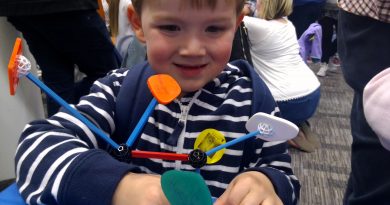How to make constellations of thoughts using balloons
The Balloonascope is a 3D graphing device used to create constellations of thoughts in real spaces using balloons. It enables people to describe different kinds of thoughts and feelings by using metaphors of space and proximity in relation to their bodies and the place that they are in.
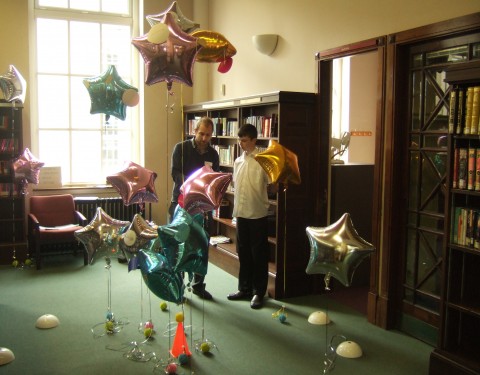
Balloonascope in Burnley Library
People can use balloons to describe and locate thoughts, by adding drawings or text to a balloon and then placing it in relation to a circle marked out on the floor.
Here is a video made by a young man called Ibrahim, who used the balloonascope to visualise a memory of home, a thought that was blocking him and an aspiration to see the stars.
The Balloonascope can be used as an informal drop in activity, with people contributing one balloon thought each as individuals, or as a structured activity in an education or wellbeing setting. If you are working with children, vulnerable adults or anyone who may not want to share what are otherwise private thoughts in this way, then you may find it useful to work with fictional characters or personas. Participants can be asked to describe and locate the thoughts of fictional characters instead of, or as well as their own.
The Balloonascopes shown here were used to explore peoples relationships with digital media as part of a Re-Dock research project commissioned by Folly and invented by John O’Shea and Neil Winterburn.
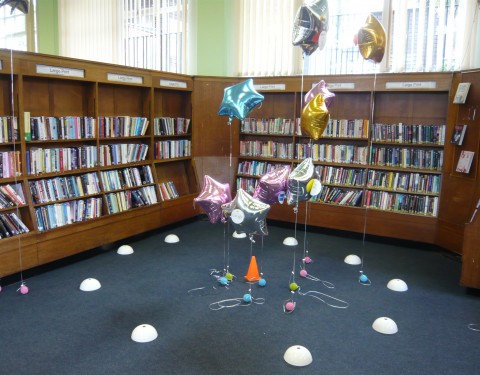
A circle is marked out on the floor and the group decides what it might mean to position their thoughts higher or lower or closer to the centre or the edge of the circle.
In the photo above, each balloon represented a thought about something to do with digital culture, e.g. Twitter, or smartphones. The following rules were used for horizontal and vertical axes.
- The nearer the balloon was placed to the centre of the circle the more important they thought that technology was.
- The lower the balloon was the more accessible the technology was deemed to be by the person placing it.
Other Ballonasopes have used very different axes e.g.
- The lower the thought the sadder the thought
- The closer the thought the thought, the more intensely it is felt
Creating a Balloonascope
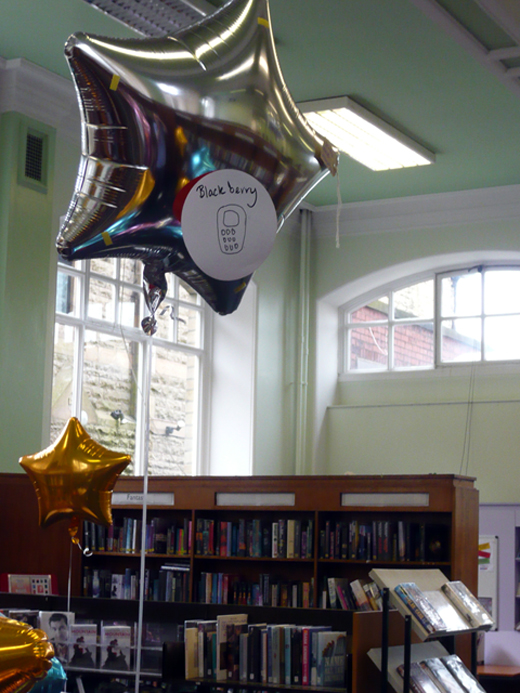
Thought about a Blackberry phone in Burnley library.
Setting Up
You will need
- At least 15 helium filed balloons
- String
- Toggles
- Small weights (or plastercine)
- Velcro tabs or tape
- Small cones or markers
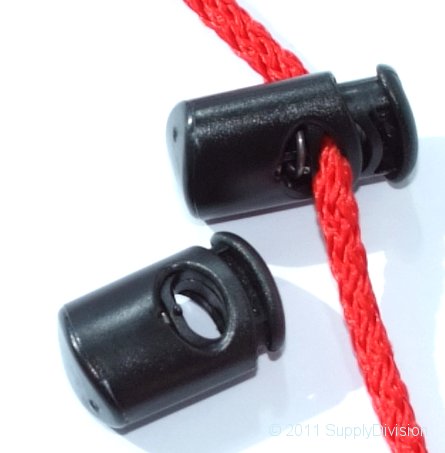
Tie about 3m of string to the balloon and feed the other end of the string through the toggle and pull some of the string through.
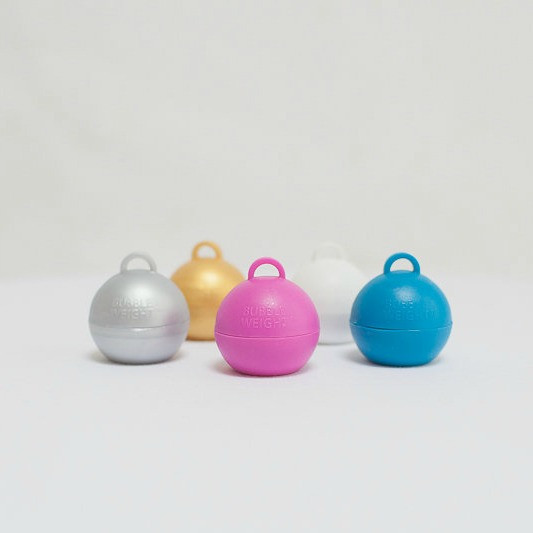
Feed the end of the string around or through the weight and then loop it back through the toggle so that the height of the balloon can be adjusted using the toggle. If you don’t have balloon weights you can use Plastercine instead,
Place the Balloons to one side.

Mark out a large circle on the floor using cones or other markers.
Choosing a starting point
We have found it useful to decide on stimulus of some kind to use as a starting point before adding balloons to the Balloonascope.
Scenarios
- A scenario from either your own or another participants life
- A fictional scenario with fictional characters or personas
If a group agree on a scenario and the people in that scenario, then participants can start to imagine what the characters might be thinking or feeling or how they might think or feel if they were in that situation, and adding balloon thoughts describing that.
Example Scenario..
Sam’s mum has gone out for the evening and left Sam in charge of little brother Daniel. Sam’s friends drop in to hang out for a bit and suggest that Sam puts word around that there is a party and anyone can come.
If you want the activity to be quite open, then you could ask people to respond to the scenario however they like and create and position whatever thoughts occur to them.
If you want the activity to be more focused you can ask the group to frame a question in response to the scenario.
Example question.
Should I put word out that there is a party in my house tonight?
Defining the axes
Agree a set of rules that define what the horizontal and vertical axes of the Balloonascope mean and write them somewhere that everyone can see them.

The closer thoughts are to the middle, the…

The higher that thoughts are the…

As more balloon thoughts are placed, it can also be interesting to discuss why some thoughts cluster together at different ends of the Balloonasope.
Adding Balloons
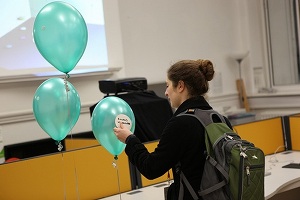
Ask participants to take a piece of cut out paper, think of a thought or feeling and make a drawing or write something about it so that it can be easily seen or read from a distance. The next step is to position the thought in the Ballonascope in relation to the rules you have defined and where other thoughts have been placed, using the toggle to adjust the height at which the balloon is floating.
Questions
These spatial relationships can be used to spark discussion about different ways of thinking and feeling. The following questions may be useful.
- Why have you chosen to put that thought there?
- How does this thought make you feel?
- How powerful is this thought?
- How might this thought effect the other thoughts?
- How is this thought effected by this thought?
- How might things change if this thought is added?
- If that thought made a sound what sound would it be?
- If that thought had a different shape what would it be?
- Does this thought remind you of anything else?
- Which of these thoughts are the most powerful and why?
- Which thoughts would you like to encourage or discourage and why?
- How might the position of these thoughts change over time?
Documenting the Balloonascope can be a great creative activity in itself, you can take photos, film video fly throughs, or create stop motion animations of it’s growth using time lapse photography.
Another approach is to recreate it digitally as shown here in an animation of a Balloonascope made in Burnley library.
Balloonascope by John O’Shea & Neil Winterburn is licensed under a Creative Commons Attribution-Noncommercial-Share Alike 2.0 UK: England & Wales License.



